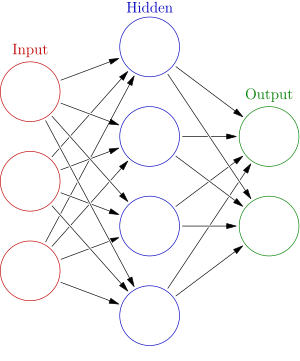Artifical neural network are networks made of artificial nerve cells. They are a subset of reserach on Neurocomputing and a branch of artificial intelligence. As the name implies, they're modelled after biological neural networks, compared against the nerve cells in the brain and spinal cord. It has more to do with an abstract model concerned about comprehension of information processes than with its actual representation as a biological network. The topology of a typical neural network follows an order of connections to nodes, establishing a relational dependency with tasks and the best to get them accomplished. After the network is built, a training stage ensues, during which the network starts its own learning process. Through successful methods, a network can theoretically learn:
1- develop newer networks and erase existing ones
2- change a weight-function
3- djust the threshold of nerve cells
4- add or delete nerve cells.
In addition, the learning behaviour is altered by changing either the activating functions of the neurons or the neurons' learning rate. A network would experience "learning" mainly through modification of the neurons' weight. By adjusting its threshold a neuron can toggled on and off, making artificial neural networks on the whole non-linear functions too complex for a learning algorithm that relies on either iterative or recursive methods from desired input and output values for learning.
 |
| An artificial neural network is made of interconnected nodes, each standing for an artificial neuron while an arrow means the connection from the output of one neuron to the input of another. |
No comments:
Post a Comment